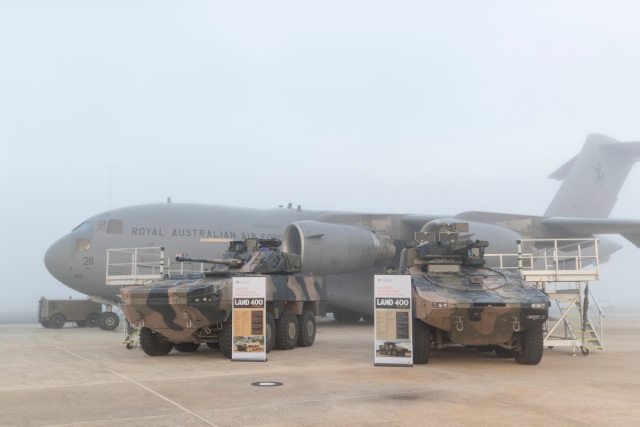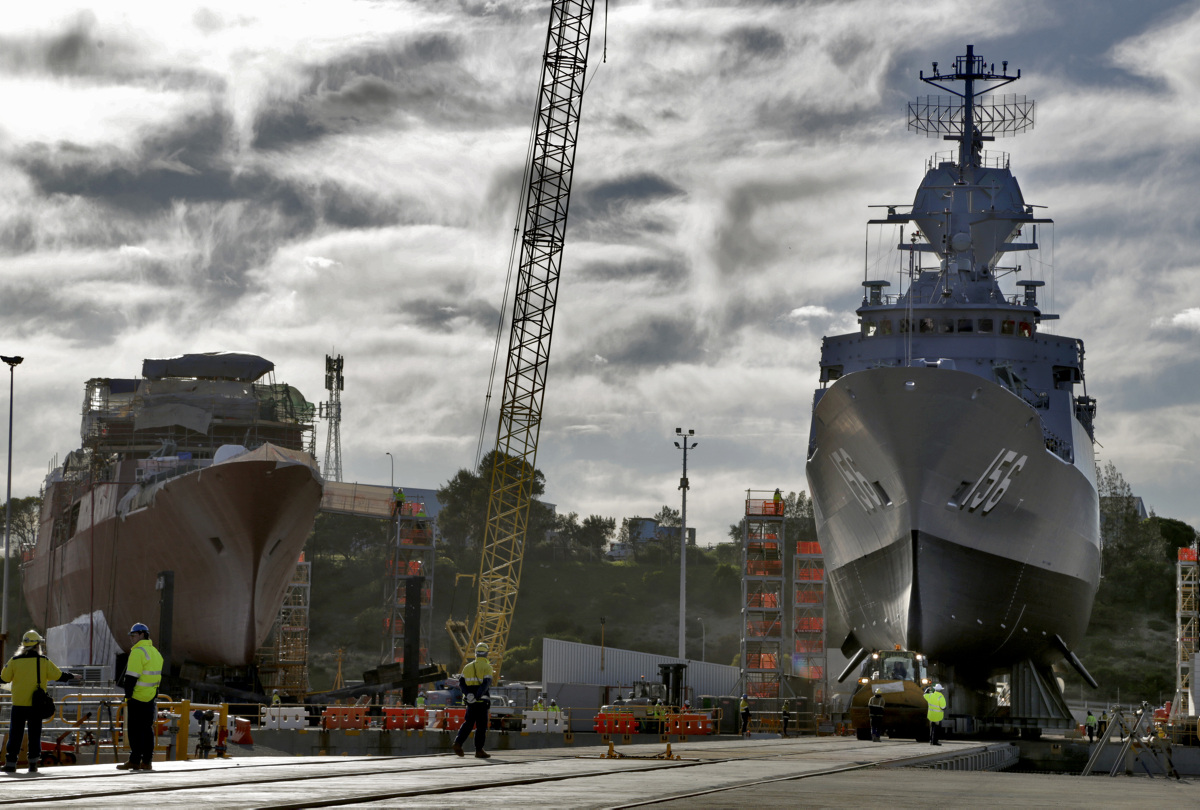By David Beaumont.
In 2016, the Australian Government released its 2016 Defence White Paper and the supplemental Defence Industry Policy Statement. Industry Statements signify Government intent to Australian Defence industry, and like strategic policy, combine hyperbole with requirements for change. In this case Government – in extolling the self-evident nature of industry as a ‘fundamental input to capability’ – sought closer collaboration between Defence and industry through the development of a native shipbuilding program, to support capability acquisition and sustainment for other major programs, as well as the enhancement of the commercial support on offer to Defence. The Statement also introduced the notion of a ‘Sovereign Defence Industry Capability’, an industrial resource of such vital concern to the Australian Defence Force (ADF) that it must be maintained if not controlled for the purposes of national defence. What the Statement didn’t do, however, was to detail a new path for industry in the context of supporting actual ADF operations.
This issue is one among many examined by Dr Stephan Fruhling, Australian National University, in a recent paper ‘Sovereign Defence Industry Capabilities, Independent Operations and the Future of Australian Defence Strategy.’ As part of the ‘Centre of Gravity’ series of papers, the purpose of its analysis of the idea of ‘sovereign defence industry capabilities’ is to provide strategic policy recommendations, of which there are three.[1] All three are aligned to addressing aspects of the issue of industry support to ADF force structure, and most importantly, operations:
- Industry capabilities must relate to scenarios which apply to the force structure of the ADF, ‘not just consider industry as a collection of industry fundamental inputs into capability’.
- Australia needs to look beyond a peacetime industry dependence on the US. While reliance was avoided because of the strategic policy orientation of ‘self-reliance’, ‘we must now also move to confront our dependence on US resupply in high-intensity operations’.
- Industry will be crucial to enable ADF operations in defence of Australia in the ‘era of long-range precision strike’. This includes the establishment of battle-damage repair capabilities in industry, as well as arrangements for ‘domestic base support’.
Fruhling notes that these ideas are ‘not what the Government had in mind’ with its industry statement. However, they are legitimate concerns that should be echoed in strategic and industry policy calculus. If the Government requires the ADF to be able to operate with any independence from coalition sources of tactical logistics support, the idea of independence should also apply at the strategic level, and with industry in mind.
It is also tremendously worthwhile to consider this issue from the perspective of Defence in its engagement with industry. The role of Defence, and the ADF in particular, in industry policy largely boils down to the articulation of the strategic or operational requirements, and the effective integration of national industrial infrastructure into ADF operations and daily business. This integration is enabled by policy and governance, and through consistent organisational behaviour. Defence presently engages with industry through a multiple of channels, with key agents being the Capability Acquisition and Sustainment Group (CASG), Joint Logistics Command (JLC) and a variety of other groups, units, functions, including the Services, responsible for their own component of the logistics process. Each agency or group has its own objectives and requirements, and the approach is demonstrably fragmented. In the past, however, the ADF has concertedly sought a corporate solution to the problem.

Contenders for Army’s future combat reconnaissance vehicles undergoing air portability trials. Photo by Department of Defence.
In the late 1990’s the ADF pursued a ‘national support agenda’, a strategic approach to its engagement with industry for ‘ the application of all the resources of the Nation to maximise the defence capability of Australia’.[2] The need for a national support strategy had been born out of reforms as early as the 1980’s, and given greater emphasis as a consequence of the downsizing of the ADF’s organic logistics support capabilities which followed. Industry’s ability to support ADF operations was conceptualised, and tested – albeit in a haphazard and ultimately inadequate way – during the major exercises of the time. The idea of national support culminated with the raising of the National Support Division (NSD) in 1997 during the Defence Reform Program. This Division was a fundamental refocussing of a downsizing Strategic Logistics Division of Headquarters ADF, and was to ‘broaden, shape and improve national and international capabilities to better enable the force generation, mobilisation and sustainment for the ADF.’[3] For just over two years NSD developed concepts and policy which reflected strategic-level logistics at its most essential; extracting support from the national economy for the benefit of military outcomes.
With the creation of the Defence Materiel Organisation in 2000, NSD was disestablished with its functions split between the ADF’s capability staff, Strategic Policy Division and the newly raised Joint Logistics Command. This decision came with questionable timing given it was soon after the ADF’s deployment to East Timor in 1999, an operation during which numerous issues with the quality and capacity of national support available could be seen. Only a year later the Departmental-level Defence Committee agreed to the raising of Strategic Logistics Branch in JLC to better progress national support issues, though some of Defence’s senior leaders considered this was merely a temporary solution to the problem. JLC continues to lead in this area, but across the wider Defence organisation the strategic concept of national support has greatly diminished in its potency. The focus now sits on supporting the ADF’s operations at hand, acquisition and sustainment rather than the how and why of mobilising industrial capacity to suit operational sustainability as a strategic concept. By 2003 and the deployment of ADF forces to support coalition operations in Iraq, where much commercial support was obtained through coalition partners and industry engagement was predominantly focussed upon the rapid acquisition of supplies and equipment, strategic engagement for long-term policy objectives was becoming a strategic side-show.
With industry being declared a ‘fundamental input into capability’, perhaps it is time for a new national support agenda. Such an approach will complement evolving strategic and industry policy as depicted in Fruhling’s paper. This does not necessarily mean further wholesale organisational change is required; a succession of changes in the organisation of Defence has already contributed to the degradation of a strategic approach to industry over the last decade. Concepts have been forgotten and policy compromised with entities like the NSD having little time to prove their worth to the ADF. However, it is logical to review authorities and accountabilities, and to reinforce areas responsible for considering industrial capacity and mobilisation on the basis of a purportedly new paradigm in defence-industry relations. It is especially necessary given the increasing engagement of industry as a supplement or complement to military capability, as is being currently postulated through several initiatives being progressed by the ADF’s Services. Finally, it is necessary simply because of its immense importance to any future considerations of how the nation might mobilise in a future war. The ADF may be prepared to launch an operation, but without industry similarly responsive the weight of national power cannot easily be brought to bear.
Just as Fruhling points out that there is much more to ‘sovereign defence industry capability’ to be explained if Government requires the ADF to conduct independent operations, there is also a need for Defence to reinvigorate its approach to engagement with industry to enable effective outcomes in these future missions. The development of proficiencies for military and civilian logisticians and others to engage with industry, or reconsidering the manner and means by which industry is approached, remain important to this end. However, it is also important for logisticians and leaders to approach the matter comprehensively, fully cognisant that national support to operations is one of considerable professional relevance. As the ADF’s strategic and operational logistics ‘tail’ comprises a greater commercial component, the effective engagement of the ‘sovereign defence industry capability’ must be second nature to logisticians and others in Defence. A strong institutional narrative regarding the integration of industry with all Defence activities, and in particular military operations, must become a priority. In the context of Stephan Fruhling’s view on the future of Australian defence strategy, the ADF’s success in strategically independent operations will be a clear reflection of the quality of this vitally important relationship.
[1] These paraphrased points are summarised at Fruhling, S., Sovereign Defence Industry Capabilities, Independent Operations and the Future of Australian Defence Strategy, ANU College of Asia & the Pacific, 2017, p 2
[2] As approved by Steering Committee, July 2001, from the Inspector General Division, Progress in pursuing the national support approach, Portfolio Evaluation Report, Department of Defence, 2001, p2-1.
[3] Ibid., p 2-7
